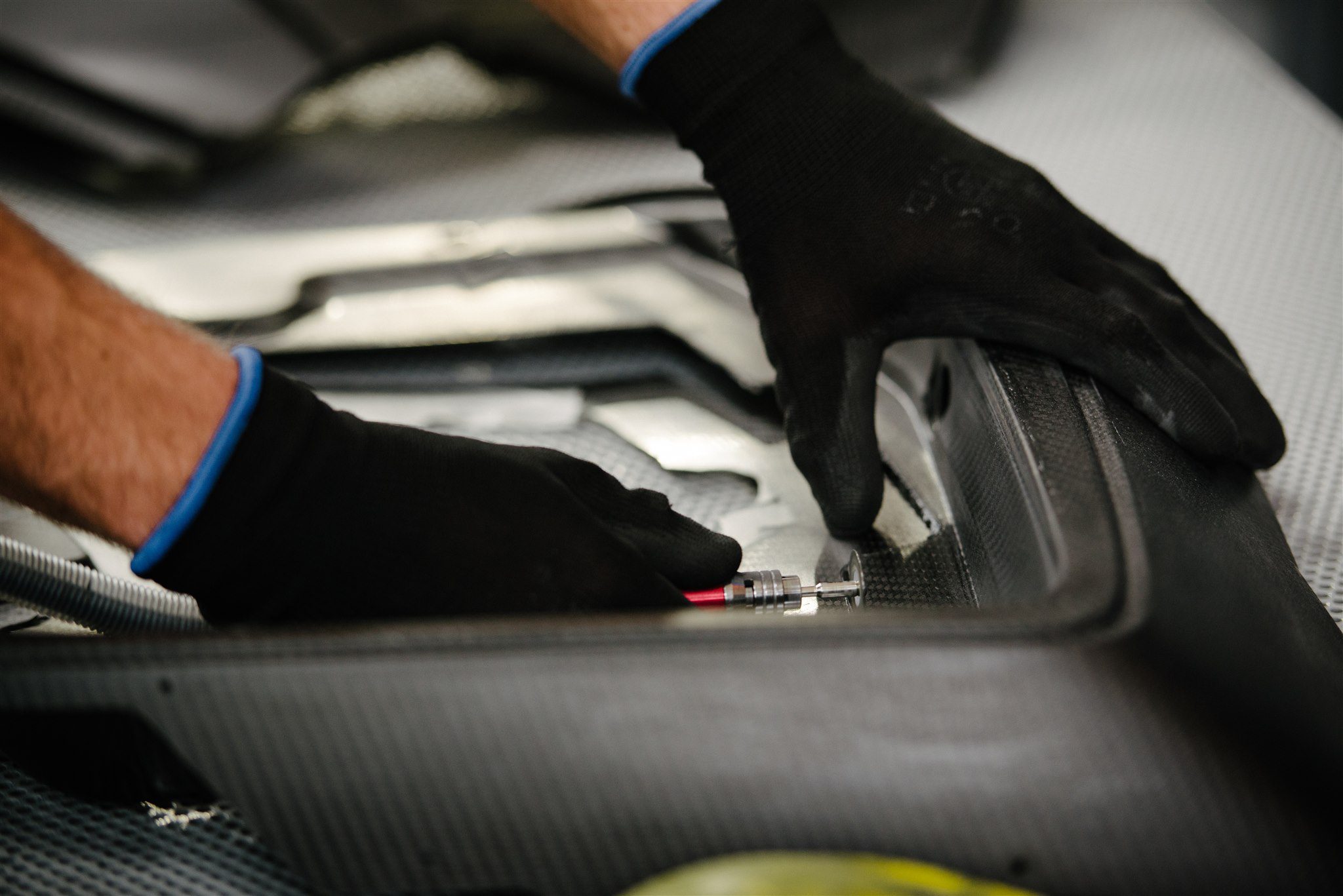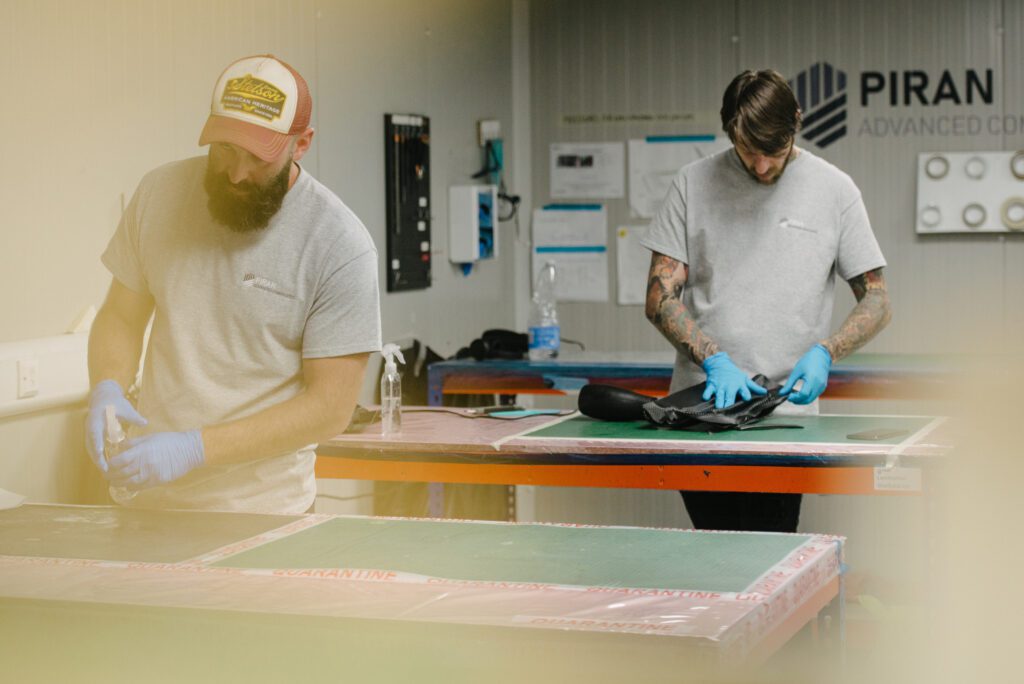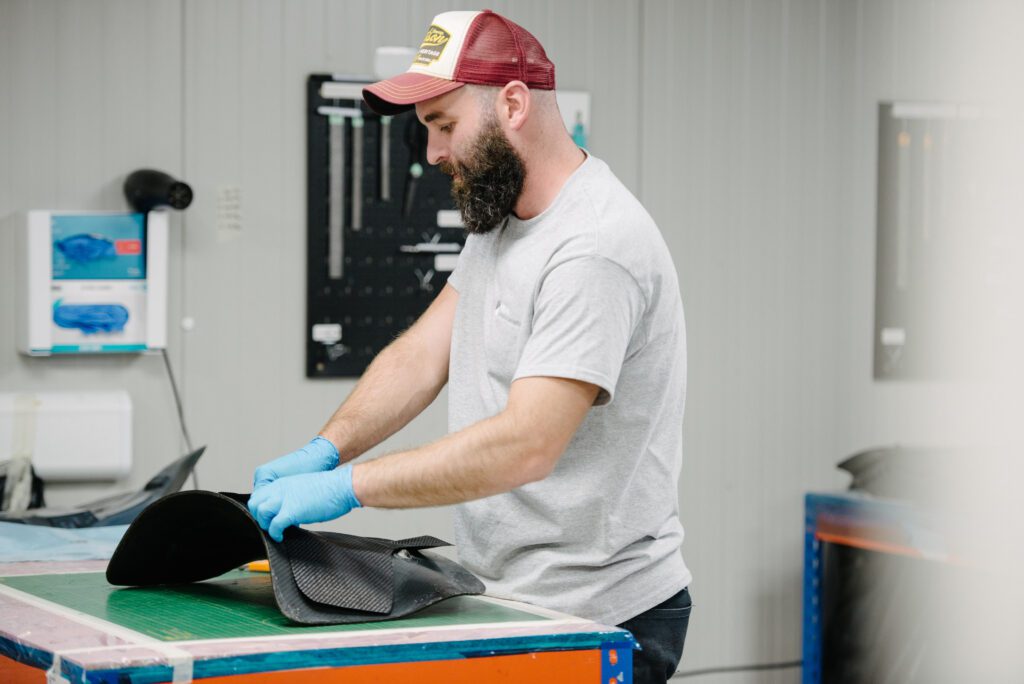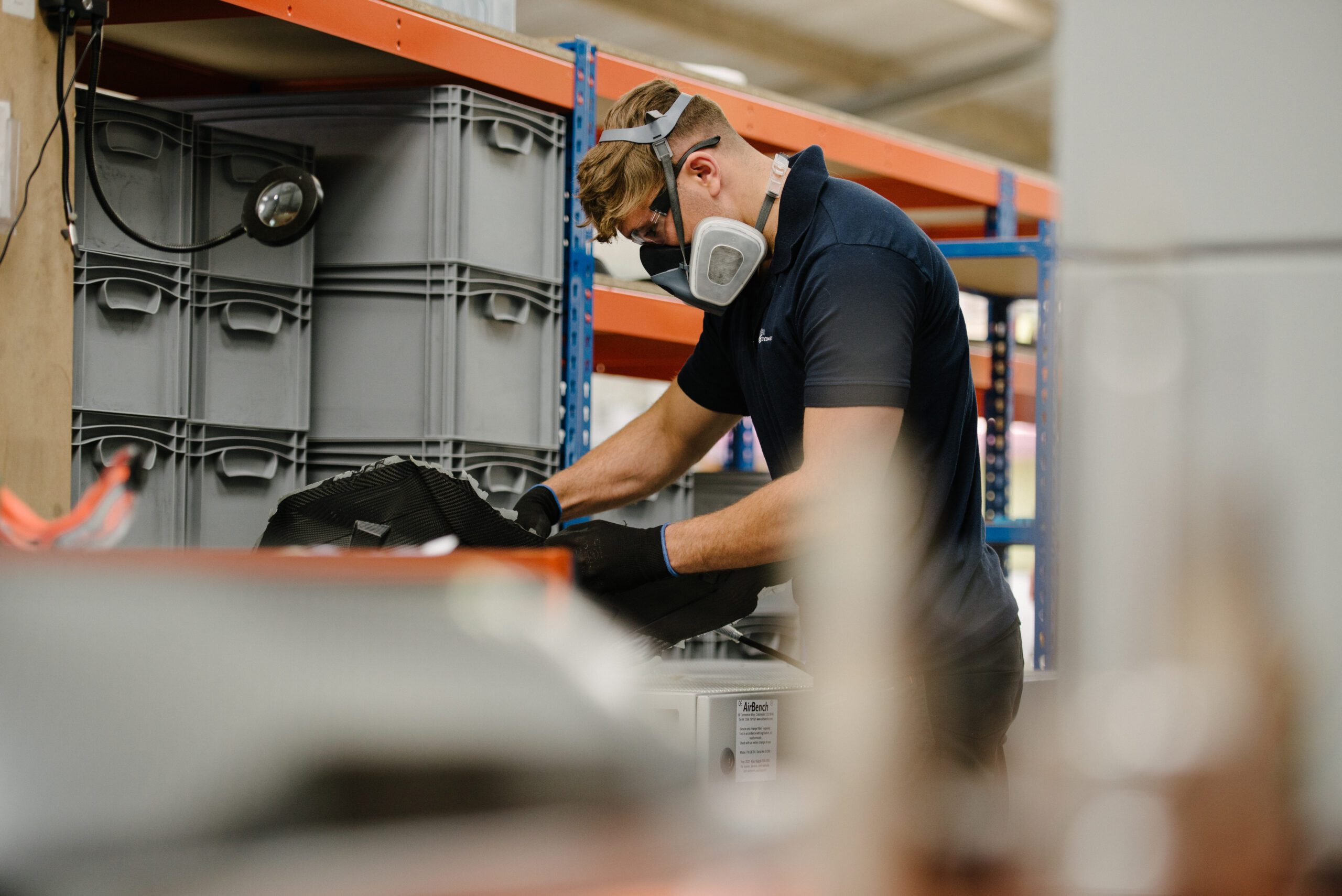Welcome to the world of composite moulding. In this article, we discuss open, closed, and cast polymer moulding and the sub-processes within each category. We will also uncover the exact steps in the composite moulding process and explore real-life applications.
As world-leading composite manufacturers, we have been at the forefront of advanced composites for over twenty years and specialise in developing ultra-lightweight carbon fibre aerostructures for record-breaking technologies.
So, are you ready to explore the world of composite moulding? Let’s dive right in.
Table of Contents
What is Composite Moulding?
In short, composite moulding is a method that combines multiple distinct materials to form a new material with enhanced properties, often stronger than its individual components. It creates durable, high-performance parts and allows for complex shapes and customisation of mechanical, thermal and electrical properties.

Types of Composite Moulding
There are three main types of composite moulding: open, closed, and cast polymer; within these categories, there are many different subtypes of composite moulding processes and manufacturing methods. So, let’s look at the types and subcategories in more detail.
Open Moulding
Open moulding is a process where composite materials are applied to an open mould, allowing for easy access and simple manufacturing. This method is cost-effective and widely used for producing large, complex shapes. It is especially popular in the marine, automotive, and construction industries for its versatility and efficiency in creating parts with varying thicknesses and contours.
Closed Moulding
Closed moulding involves a two-sided mould system that completely encloses the material, leading to higher-quality finishes and more precise dimensional control. This technique produces parts with reduced emissions and waste, making it a more environmentally friendly option. It is commonly used in industries requiring high strength-to-weight ratios and excellent surface finish.
Subtypes of Composite Moulding Methods
Open moulding methods include:
- Chopping/spray-up
- Wet hand layup
- Filament winding methods
Closed moulding methods include:
- Compression moulding
- Vacuum bag moulding
- Resin transfer moulding (RTM)
- Vacuum infusion processing (VIP)
- Vacuum-assisted resin transfer moulding (VARTM)
- Light resin transfer moulding (LRTM)
- Pultrusion
- Reinforced Reaction Injection Moulding (RRIM)
- Centrifugal casting
- Continuous lamination

Materials Used in Composite Moulding
Many materials are used in composite moulding, such as carbon, glass aramid, epoxy, polyester, vinyl ester, and fillers and additives. Let’s find out how each type of material benefits the composite moulding process.
Fibre Reinforcements
Fibre reinforcements are crucial in composite moulding, providing the structural strength required for the composite material. These fibres, such as carbon, glass, or aramid, are embedded within the resin to enhance mechanical properties, including tensile strength, durability, and stiffness.
Resin Systems
Resin systems act as the matrix in composite moulding, binding the fibres together and shaping the overall form of the composite part. Epoxy, polyester, and vinyl ester are common resins used for their excellent bonding properties and resistance to environmental factors.
Fillers and Additives
Fillers and additives are incorporated into composite materials to improve performance characteristics, reduce costs, or modify physical properties. Fillers can enhance strength, thermal conductivity, or electrical properties, while additives may include UV stabilisers, flame retardants, or colourants to meet specific application requirements.

Steps in the Composite Moulding Process
The composite moulding process involves preparing materials, mould preparation, layup and consolidation, and curing. During curing, materials undergo a chemical reaction initiated by heat or UV light. After curing, the part is removed from the mould and undergoes finishing techniques such as trimming, sanding and applying coatings.
1. Preparing Materials
This stage ensures that the materials are compatible and optimised for moulding, including cutting, laying out the fibres, and preparing the resin systems for application. Proper material preparation is essential for achieving the finished composite part’s desired mechanical properties and surface quality.
2. Mould Preparation
Mould preparation ensures the mould is clean, defect-free, and correctly treated with release agents to prevent the composite material from sticking. This step includes the careful alignment and securing of mould halves, if applicable, and the application of coatings that facilitate the easy release of the final product.
3. Layup and Consolidation
Layup and consolidation involve arranging fibre reinforcements within the mould and applying resin to form the composite material. The materials are carefully layered and compacted to remove air pockets, ensuring a uniform distribution of resin throughout the fibres for optimal structural integrity and quality of the finished part.
4. Curing
Curing is when the composite material undergoes a chemical reaction, typically initiated by heat, UV light, or catalysts, to harden and solidify the resin matrix. This stage achieves the composite part’s desired mechanical strength, stability, and durability. Parameters such as temperature, pressure, and time are carefully controlled to ensure optimal curing and achieve the highest results.
5. Demoulding and Finishing
Demoulding and finishing is the final step in the composite moulding process; the cured part is removed from the mould and subjected to various finishing techniques. This phase includes trimming excess material, sanding to smooth surfaces, and applying paints or coatings if required. Finishing ensures the part meets all dimensional tolerances and aesthetic qualities before it is deemed complete and ready for use or further assembly.
Applications of Composite Mouldings
Composite mouldings are used across various industries due to their strength, lightweight, and corrosion-resistant properties. In the automotive sector, they’re used for body panels and structural components, enhancing fuel efficiency through weight reduction. Aerospace applications include structural parts for aircraft and spacecraft, where high performance under extreme conditions is needed. In construction, composite mouldings contribute to durable, energy-efficient building materials. They’re also used in the manufacturing of sports equipment, medical devices, and wind turbine blades, showcasing their versatility and importance in modern engineering and design.

Advantages and Challenges
The world of composite moulding presents opportunities for innovation and obstacles in the manufacturing process. Let’s look at both below:
Advantages of Composite Moulding Techniques
Composite mouldings offer significant benefits, including high strength-to-weight ratios, crucial for fuel efficiency and performance in industries like aerospace and automotive. They also provide excellent corrosion resistance, making them ideal for marine applications. Their versatility allows for complex shapes and designs, opening up new possibilities in engineering and architecture.
Challenges of Composite Moulding Techniques
Despite their advantages, composite mouldings come with challenges. The initial costs can be high due to materials and specialised manufacturing processes. Additionally, recycling composite materials remains complex, posing environmental concerns. There’s also the need for skilled labour for manufacturing and repair, which can limit their application in certain areas.

Future Trends and Innovations in Composite Moulding
Future trends in composite moulding focus on sustainability, with research into recyclable composites and bio-based resins gaining momentum. Advancements in automation and smart manufacturing techniques are also expected to enhance efficiency and reduce costs. Additionally, the development of new materials with superior properties, such as carbon nanotubes and graphene, promises to open up new applications in sectors ranging from aerospace to electronics, broadening the scope of composite moulding technologies in various industries.
Conclusion
In conclusion, there are three main composite moulding processes: open, closed and cast polymer moulding. Within these types exist various subcategories, such as wet hand lay-up, vacuum bag moulding, resin transfer moulding, compression moulding, centrifugal casting and solid-surface moulding.
Here at Piran Composites, our experienced designers, engineers, and technicians have the expertise and technology to take on even the most complex composite projects. We also specialise in creating bespoke, superior-quality moulds, tools, jigs and fixtures for various industries.
If you would like to find out more, simply get in touch with our expert team.


